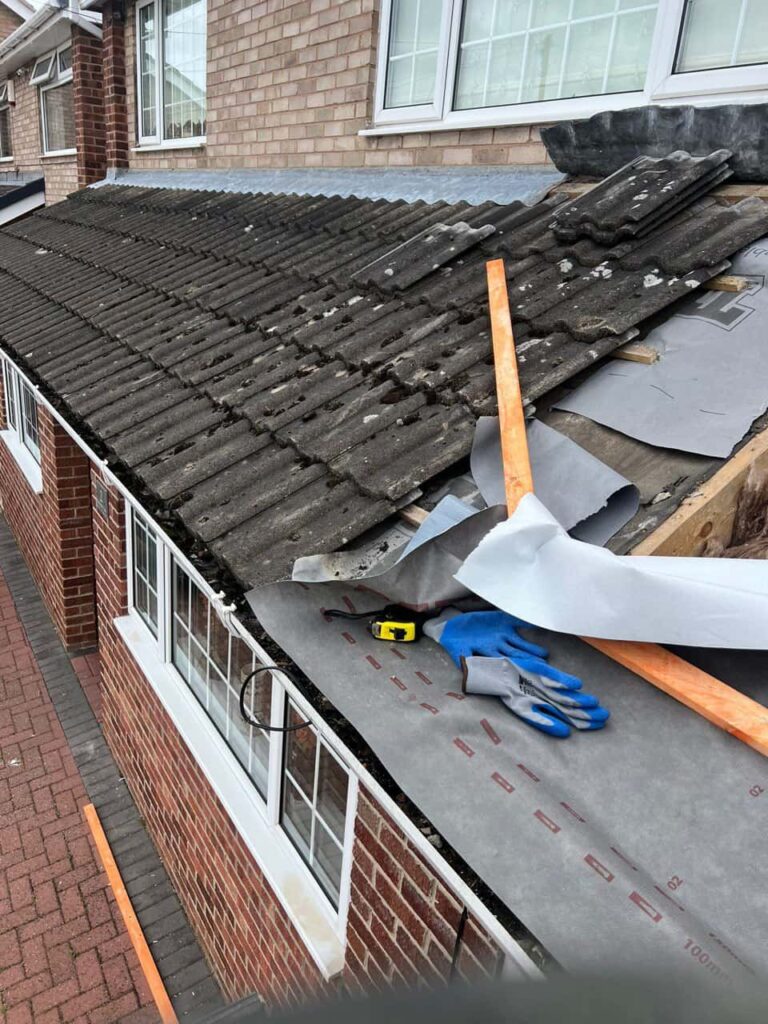Mansard roofs, known for their unique double-sloped design, are popular in Haywards Heath and surrounding areas in West Sussex. While these roofs offer a stylish appearance and additional living space, they are particularly vulnerable to damage after heavy rain or storms. Spotting issues early on can save you from more extensive and costly repairs. In this blog post, we’ll guide you through the key signs of damage to look out for on your Mansard roof after adverse weather conditions.
1. Water Stains and Leaks Inside Your Property
One of the first signs of roof damage is water stains on ceilings or walls. Mansard roofs have a steeper upper slope and a flatter lower section, which can make them more prone to water pooling if drainage is compromised. If you notice brown or yellowish stains or feel dampness inside your home, it could indicate a leak originating from your roof. Ignoring this early sign can lead to mould growth and more severe structural issues over time.
2. Missing, Cracked, or Curled Shingles
Shingles on Mansard roofs are often more exposed to wind and rain due to the roof’s lower slope. After a heavy storm, inspect the roof for any missing, cracked, or curled shingles. Even a few compromised shingles can allow water to penetrate the underlying structure, leading to leaks. Keep in mind that the design of Mansard roofs makes it easier for wind to lift shingles, especially along the lower slope. Regular inspections are key to catching these issues early.
3. Blocked or Overflowing Gutters
Given the sloped design, Mansard roofs rely heavily on effective drainage to prevent water accumulation. Check your gutters after heavy rain for any signs of blockage or overflowing. Debris, such as leaves or branches, can easily get lodged in the gutters, leading to water backing up and spilling over. If left unchecked, this can cause damage to the roofline, fascia boards, and even the structural integrity of the roof itself.
4. Sagging Roof Sections
Heavy rainfall can lead to pooling on flat or low-slope sections of Mansard roofs. This excess water, if not drained properly, can put undue pressure on the roof, causing it to sag. If you notice any drooping or uneven sections on your roof, it’s a clear indication that water has been sitting there for too long. Sagging is a serious issue that needs immediate professional attention to prevent further deterioration.
5. Damage to Flashing and Roof Joints
Flashing and roof joints are crucial elements that seal vulnerable areas, such as around chimneys, dormers, and vent pipes. After a storm, inspect these areas for any cracks, rust, or separation. Damaged flashing can lead to water seeping into your home, causing leaks that may go unnoticed until significant damage has occurred. Due to the multi-faceted design of Mansard roofs, these areas are particularly susceptible to weather-related wear and tear.
6. Debris Build-Up on the Roof Surface
Debris such as leaves, twigs, and even larger branches can accumulate on the surface of Mansard roofs after storms. This build-up not only adds weight to the roof but can also block drainage channels, leading to water pooling. The longer debris sits, the higher the risk of water damage, especially on the lower slope of the roof. Regular clearing of debris is essential to maintain the health of your roof.
Conclusion
Identifying damage early on after heavy rain or storms is crucial for maintaining the integrity of your Mansard roof. By regularly inspecting for water stains, checking the condition of shingles, and ensuring that gutters and flashing are in good shape, you can prevent minor issues from turning into costly repairs. If you live in Haywards Heath or the surrounding areas and notice any of the signs mentioned above, don’t hesitate to contact Haywards Heath Roofing Repairs. Our team of experienced professionals is ready to assess the condition of your roof and provide high-quality repairs to keep your property safe and dry.
Protect your home by staying proactive with roof maintenance—book an inspection today with Haywards Heath Roofing Repairs.
Call us on: 01444 718 199
Click here to find out more about Haywards Heath Roofing Repairs
Click here to complete our contact form and see how we ca help with your roofing needs.

